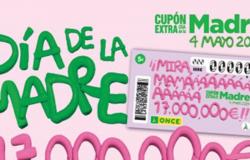Image source, Getty Images
- Author, Kelly Grovier
- Author’s title, BBC news
-
1 hour
when it comes to falsification and plagiarism there seems to be nothing new under the sun.
Recent revelations, ranging from the discovery of an art falsification workshop in Rome to the accusation that a baroque masterpiece in the national Gallery of London is nothing more than a gross imitation, they do nothing but remind us that duplicity in the art world has a long history.
The news of the confiscation of more than 70 fraudulent works of art in a clandestine laboratory in Rome was followed by the launch of the book NG6461: The Fake Rubens (NG6461: The false Rubens), by the author Euphrosyne Doxiadis, who ensures that the London National Gallery has a painting that is not at all what it seems.
The conclusion of Doxiadis reaffirms that achieved in 2021 by the Swiss company Art Recollanition, which determined through the use of artificial intelligence that there was a 91% probability that the work “Samson and Dalila”, an oil on wood attributed to the teacher Peter Paul Rubens, was created by someone who was not Rubens.
Image source, Getty Images
The expert’s statement that the brushstroke we see in the Rubens picture is gross and totally incompatible with the fluidity of his hand is strongly questioned by the National Gallery, which remains firm in his attribution.
The divergence of opinions between the experts of the museum and those who doubt the authenticity of the work opens an interesting space to reflect on the artistic value and merit. Is there legitimacy in falsification? Can falsifications be masterpieces?
As more sophisticated analysis tools are applied to paintings and drawings whose legitimacy has been in doubt, as well as those whose validity has never been questioned, it is likely that debates about the integrity of cultural icons accelerate.
What follows are 5 simple rules to detect a false masterpiece.
1. The pigments
To be a successful art forgener, more than technical skill and wrong ethic are needed. You have to know both history and chemistry.
Anachronistic pigments will betray you at all times.
These have been the perdition of German art forgener Wolfgang Beltracchi and his wife Helene, who managed to sell modernist masterpieces improvised by millions of dollars before the carelessness of using prefabricated paint in their bold palettes sealed their destination.
Image source, Getty Images
Beltracchi, whose modus operandi was to create “new” works by numerous artists – from Max Ernst to André Derain – instead of recreating the losses, he always was careful to mix their own paintings to make sure that they only contained available ingredients for the artist who was trying to impersonate.
He only slipped once. And that was enough.
By manufacturing a crazy red landscape of horses in puzzles, which attributed German expressionist Heinrich Championonk, Beltracchi used an already prepared paint tube that contained a pinch of titanium white, a relatively new pigment, to which Championonk would not have access.
It was all the researchers needed to demonstrate that the work sold for about US $ 3 million was false.
Artists can be visionaries, but they are not time travelers.
2. The past of the work
It is edifying to believe that the value of a person is not linked to their past. The same does not happen with art.
A painting, a sculpture or a drawing without a story is not, unfortunately, more inspiring. Rather, it’s suspicious. Or, rather, it should be. And too often, greed can interfere with the clarity of the evaluation of the authenticity of a picture or sculpture.
Things have the stories we want to have. That was certainly the case of a series of false Vermeers who left the workshop of the Dutch portrait Han Van Meegeren, one of the most prolific and successful counterfeiters of the twentieth century.
Image source, Getty Images
Desperate to believe that the canvases of Vermeer that appeared miraculously, including a representation of “Christ and the men of Emaus”, could be lost masterpieces of the same hand that created “the young woman of the pearl” and “La Lechera”, the collectors ignored the flagrant absence of any trace of the origin of the paintings: its previous owner, history of exhibitions and proof of sale.
But, in a notable turn, after being accused by the Dutch authorities of the crime of selling a Vermeer – therefore, a national treasure – to the Nazi official Hermann Göring, Van Meegeren decided to expose himself as a scammer shortly after the end of World War II.
To demonstrate his innocence – if he could be called innocence – and demonstrate that he had simply sold a falsification without value of his own series, Van Meegeren made the extraordinary feat of creating a fresh masterpiece from nowhere in the face of the astonished eyes of the experts.
3. The stroke pressure
The gestures of the artists -its brushstrokes and their strokes -, studied and instinctive at the same time, are the fingerprints written on canvases.
The lightness of an artist’s lines and the rigidity of those of another are extremely difficult to falsify, especially if you are aware that each contraction of the brush will be examined by suspicious eyes and avant -garde equipment.
Working the stroke pressure under pressure is difficult to do. British counterfeiter Eric Hebborn – who died in suspicious circumstances in Rome in 1996 after a career falsifying more than 1,000 works – exceeded this obstacle with alcohol.
Image source, Getty Images
According to all the stories, the brandy was Hebborn’s tool to calm his nerves. This allowed him to live without inhibitions the mind and muscle of any old teacher who was interpreting.
While the falsifications in the hands of the Beltracchi and Van Meegeren falsifiers are plagued by incoherent gestures, the fluidity of the falsified drawings by Hebborn continues to confuse experts.
To this day, the institutions that have works that went through their hands refuse to accept that they are all false.
4. The author’s biography
When the analysis of the pigments, the origin and the pressure of the brush still leave you perplexed, it may be necessary to deepen a little more.
For 20 years, since the 1990s, the authenticity of a work of a dead nature allegedly of Vincent Van Gogh has been confirmed and refuted again and again by experts.
For some, the abrasing reds and submarine blue that disturbedly resonated in the bouquet of roses, margaritas and wild flowers did not have the timbre of the truth and seemed to marry the painter’s palette.
The absence records of the painting did not help.
Image source, Getty Images
But an radiography made in 2012 ruled out doubts when he revealed that the artist reused a canvas with which he had created another work, something that made explicit reference in a letter in January 1886.
“This week,” Van Gogh told his brother Theo, “I painted a huge work with two naked torsos, two fighters … and I really like doing it.”
The static struggle of the two athletes trapped in the painting for more than a century not only rescued the work of the unfair accusations of illegitimacy, but also created a kind of fresh compound picture, a vivid and desperate impression to survive.
5. The writing
The last guarantee to authenticate a work of art is the spelling concealer.
That would have saved the collector Pierre Lagrange US $ 17 million, the price he paid in 2007 for a falsification of a small painting of 30×46 cm falsely attributed to the American expressionist Jackson Pollock.
Famous by its drip style, Pollock has a surprisingly legible firm, an unmistakable “C” before the final “k”. An omitted consonant would do more than exposing the falsification: it would destroy the reputation of an entire gallery.
Image source, Getty Images
The careless firm was only one of the many ‘red flags’ found in works falsely attributed to Rothko, Kooning, Motherwell and others that the Knoedler & Co gallery, one of the oldest and most estimated art institutions in New York, managed to sell for US $ 80 million.
The fraudulent works had been supplied by a doubtful trafficker who claimed that they came from an enigmatic collector, “Mr X”. Just before the scandal exploded in the press, the gallery closed its doors after 165 years.
The alleged author of the falsifications, a self-taught septuagenarian named Pei-Shen Qian, who had operated from a falsification workshop in Queens, New York disappeared. Later he appeared in China.
Subscribe here To our new newsletter to receive every Friday a selection of our best content of the week.
And remember that you can receive notifications in our app. Download the latest version and act.






